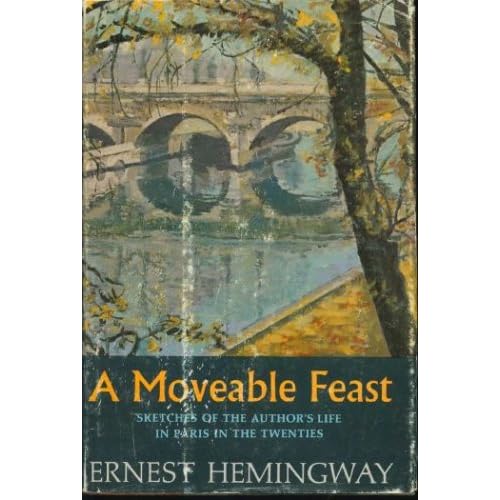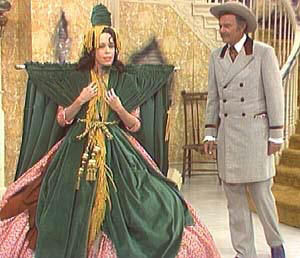In this series, I combine two of my favorite things, reading and cooking. That probably means there will also be discussion of more than a few books made into movies. I hope that you will be moved to offer suggestions for other reads that will be “palateable”!
Historical fiction is my passion and my not-so-secret and not-so-guilty pleasure, so I am happy to review a couple of interesting novels today that are loosely based on famous people. Loving Frank: A Novel is the tragic love story of Frank Lloyd Wright and Mamah Borthwick Cheney, and American Wife: A Novel (New York Times Notable Books)
is the tragic love story of Frank Lloyd Wright and Mamah Borthwick Cheney, and American Wife: A Novel (New York Times Notable Books) is a thinly disguised yet compelling look at Laura Bush and the marriage that catapulted her into the public eye. Wisconsin is practically a character in both novels, and readers will recognize the beautifully delineated settings in the books. Of course, who can resist Wisconsin cheese? I’ll pair these books with a yummy recipe for Wisconsin Cheese Chowder.
is a thinly disguised yet compelling look at Laura Bush and the marriage that catapulted her into the public eye. Wisconsin is practically a character in both novels, and readers will recognize the beautifully delineated settings in the books. Of course, who can resist Wisconsin cheese? I’ll pair these books with a yummy recipe for Wisconsin Cheese Chowder.
 When I teach my students about the historical fiction genre, the primary criteria is that there is a fictional main character who interacts with real people, places, and events in history. Although American Wife: A Novel (New York Times Notable Books)
When I teach my students about the historical fiction genre, the primary criteria is that there is a fictional main character who interacts with real people, places, and events in history. Although American Wife: A Novel (New York Times Notable Books) probably isn’t true historical fiction, it reads like it is. Its protagonist, Alice Lindgren Blackwell, comes from a small town, liberal Democratic family and upon meeting Charlie Blackwell, the crude and rakish son of the former Republican governor of Wisconsin, she is smitten despite the obvious differences in their backgrounds. We follow Alice and Charlie through meeting the family at the resort compound in Door County, Wisconsin, a losing run for Congress, the purchase and management of the Milwaukee Brewers, a successful run for governor of Wisconsin, and finally a presidency clouded by an unpopular war. Sound familiar if you just change the names and the states? I agree with most reviewers that the early part of the story is better than the White House part, but the story kept my attention all the way to the end . Sittenfeld appears to be trying to paint a picture of a loyal wife struggling with the suppression of her own beliefs in order to maintain a political marriage, and she does a good job of it.
probably isn’t true historical fiction, it reads like it is. Its protagonist, Alice Lindgren Blackwell, comes from a small town, liberal Democratic family and upon meeting Charlie Blackwell, the crude and rakish son of the former Republican governor of Wisconsin, she is smitten despite the obvious differences in their backgrounds. We follow Alice and Charlie through meeting the family at the resort compound in Door County, Wisconsin, a losing run for Congress, the purchase and management of the Milwaukee Brewers, a successful run for governor of Wisconsin, and finally a presidency clouded by an unpopular war. Sound familiar if you just change the names and the states? I agree with most reviewers that the early part of the story is better than the White House part, but the story kept my attention all the way to the end . Sittenfeld appears to be trying to paint a picture of a loyal wife struggling with the suppression of her own beliefs in order to maintain a political marriage, and she does a good job of it.
Critics question whether Laura Bush really is that person, but for me, that’s not important. I think American Wife is a story worth reading and it probably will make you examine your own relationships. What have you given up for for love? Thank goodness most of us don’t have to play out our lives on such a public platform!
Curtis Sittenfeld is the author of Prep, which I loved, and says that Laura and George Bush were the inspiration for American Wife. There are interesting interviews with her here and here if you want to know more about Sittenfeld.
Like American Wife, Loving Frank: A Novel is also a fictional account of a love affair between an arrogant and rakish man and his unlikely partner. Author Nancy Horan has built a smooth and textured masterpiece out of Oak Park and Spring Green lore about the relationship between Frank Lloyd Wright and Mamah Cheney. You can read all the details here, and if you really get into the story, you can read a nonfiction book about the story, Death in a Prairie House: Frank Lloyd Wright and the Taliesin Murders
is also a fictional account of a love affair between an arrogant and rakish man and his unlikely partner. Author Nancy Horan has built a smooth and textured masterpiece out of Oak Park and Spring Green lore about the relationship between Frank Lloyd Wright and Mamah Cheney. You can read all the details here, and if you really get into the story, you can read a nonfiction book about the story, Death in a Prairie House: Frank Lloyd Wright and the Taliesin Murders , by William R. Drennan. We were so interested in the story that we planned a weekend trip to visit Taliesen and see what all the fuss was about. It was well worth the trip and the tour exceeded our expectations.
, by William R. Drennan. We were so interested in the story that we planned a weekend trip to visit Taliesen and see what all the fuss was about. It was well worth the trip and the tour exceeded our expectations.

We read Loving Frank in our church book club and I decided to read it again right before the book discussion. The first time I read it, I feverishly concentrated on the dramatic plot leading to Mamah’s murder, but the second time through, I had open space in my brain to consider all the implications of falling in love with a self-proclaimed (and now officially recognized) genius. Horan’s portrait of Mamah may suffer from 21st century “feminizing” but I’d like to think that she really was a free-spirited feminist who was stifled in a conventional marriage. Perhaps how she went about fixing that problem was wrong and ultimately tragic, but just as Sittenfeld makes us envision a life as the wife of an American president, Horan has created a mesmerizing portrait of a love affair between two kindred spirits. Some of the people in our book club read the book expecting to find more biographical information about FLW; don’t expect that. This book pays homage to Mamah, and will just whet your appetite for more information about both Cheney and Wright.
Some of the people in our book club read the book expecting to find more biographical information about FLW; don’t expect that. This book pays homage to Mamah, and will just whet your appetite for more information about both Cheney and Wright.
 As for the Cookin’ part of this post, since the Wisconsin Milk Marketing Board has already set up a beautiful recipe web page, I’m just going to link the site for you. You can print off the recipe for delectable Cheese Chowder. Make a batch for this beautiful fall weather and pretend you are visiting Taliesen before the snow flies.
As for the Cookin’ part of this post, since the Wisconsin Milk Marketing Board has already set up a beautiful recipe web page, I’m just going to link the site for you. You can print off the recipe for delectable Cheese Chowder. Make a batch for this beautiful fall weather and pretend you are visiting Taliesen before the snow flies.





 When I teach my students about the historical fiction genre, the primary criteria is that there is a fictional main character who interacts with real people, places, and events in history. Although
When I teach my students about the historical fiction genre, the primary criteria is that there is a fictional main character who interacts with real people, places, and events in history. Although 
 Some of the people in our book club read the book expecting to find more biographical information about FLW; don’t expect that. This book pays homage to Mamah, and will just whet your appetite for more information about both Cheney and Wright.
Some of the people in our book club read the book expecting to find more biographical information about FLW; don’t expect that. This book pays homage to Mamah, and will just whet your appetite for more information about both Cheney and Wright. As for the Cookin’ part of this post, since the Wisconsin Milk Marketing Board has already set up a beautiful recipe web page, I’m just going to link the site for you. You can print off the recipe for delectable
As for the Cookin’ part of this post, since the Wisconsin Milk Marketing Board has already set up a beautiful recipe web page, I’m just going to link the site for you. You can print off the recipe for delectable 










